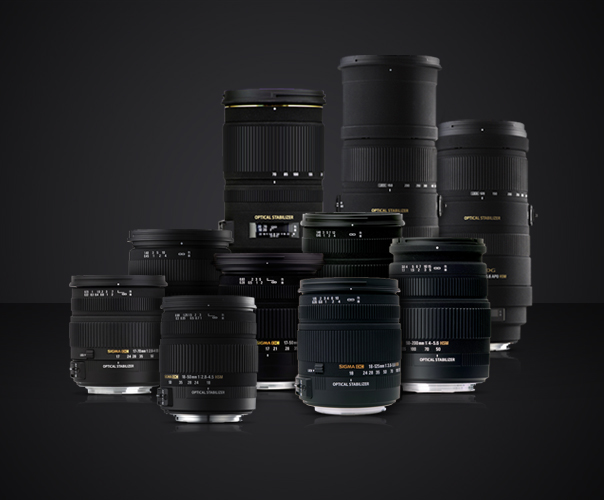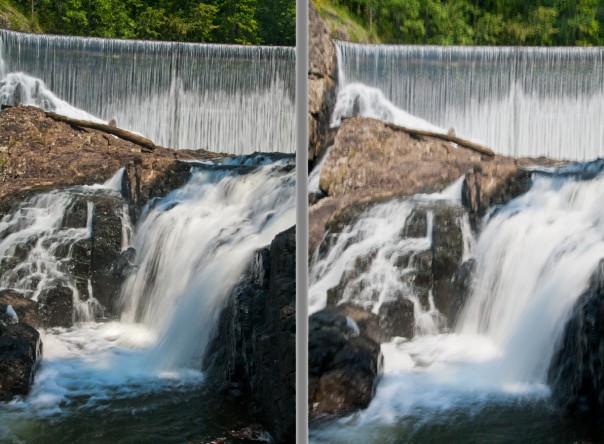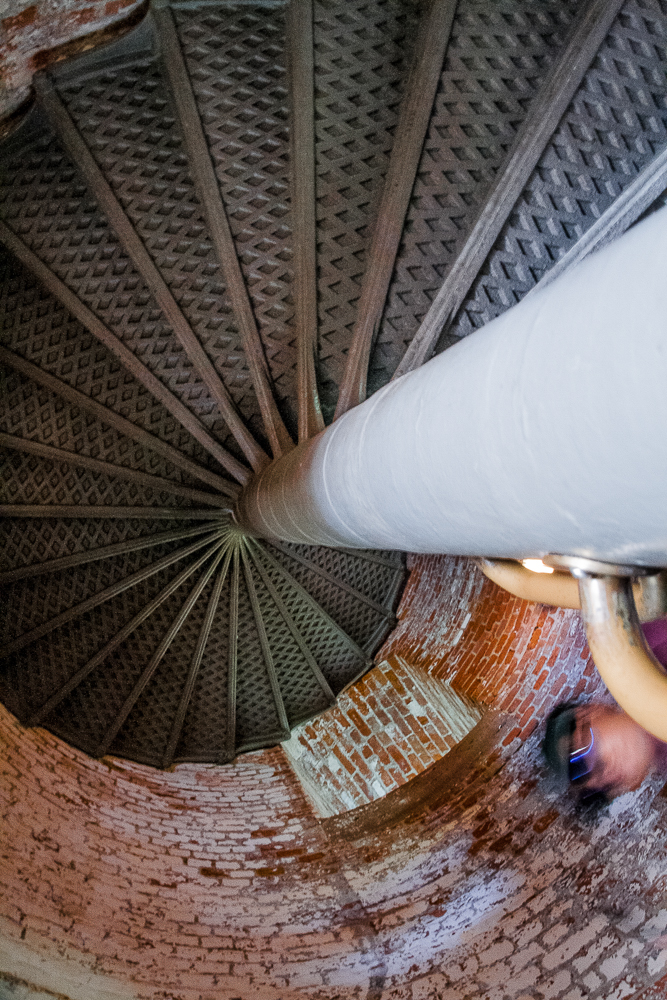Many lenses in the SIGMA line feature Optical Stabilization, which is a great feature for helping photographers nail sharp shots when camera shake may be an issue.
SIGMA lenses with “OS” in the name include this technology which employs motion sensors to control floating lens groups to counteract camera movements which can cause undesirable blur from hand-holding shots with slower shutter speeds. Putting it another way: Optical Stabilization works as a sort of invisible tripod to hold the camera steady for shutter speeds longer than the reciprocal of the focal length.
Optical Stabilization is a great lens feature for controlling one type of undesirable and unintentional source of blurring in photographs–slight camera motions during capture when the shutter speed is longer than the reciprocal of the focal length (longer than 1/100 for a 100mm focal length, longer than 1/50 for a 50mm focal length, longer than 1/500 for a 500mm focal length, as a few examples.)

Long ago this rule of thumb was simply this simple:
“When you’ve got a shutter speed longer than one over the focal length, use a tripod.”
But since Optical Stabilization came along, it’s now a bit longer:
“When you’ve got a shutter speed longer than one over the focal length, you might use a tripod, or you can switch on Optical Stabilization and gain a few stops ‘wiggle room’ for handholding.”
How much slower than the focal length you can go varies slightly from person to person, based on overall levels of jittery-ness. (A trained sharpshooter will most probably have much better luck straight out of the gate than a DSLR beginner on too much coffee!), but most photographers should easily see much sharper images with OS activated at shutter speeds a few stops below the focal length reciprocal with just a little practice and understanding of what OS is, and what it does and how it does it–(as well as what it’s not, and what it can’t do.)
Understanding Blur
Before we go any further, we need to talk a bit about blur. (Please try to focus on this section!)
There are many types of blur associated with photography. Some are absolutely desirable, and some, not so much. For example, shallow depth of field that creates fore- and background blur, making the subject pop, is often pleasing and desirable. But having the subject out of focus (or having nothing in the frame whatsoever in focus) isn’t as pleasing.
Motion blur to express or indicate speed or movement can sometimes be a successful technique. This can be accomplished with either camera or subject movement, or both.
Then there’s plain old camera shake. These slight, unintended camera movements when the shutter speed is slower than the reciprocal of the focal length belongs almost unequivocally in the undesirable category. It doesn’t matter where you are focused in the frame–if the camera jerks too much during capture (per the focal length-reciprocal rule) all the stationary points in the field of view are recorded as motion traces. And this–and only this–is what Optical Stabilization corrects.

When activated, the Optical Stabilization technology inside a SIGMA lens senses slight motion of the camera and lens combination in the photographer’s grip and sends signals to the OS system’s floating lens group to cancel out the movement with an opposite reaction. So, the light rays reaching the sensor plane from stationary objects in the frame will still be recorded to the sensor at only one location–instead of with that undesirable jittery camera shake effect.
Got it? Optical Stabilization technology only detects and corrects for slight camera and lens movements during capture. It does not and can not control what is happening outside of the camera.
Think about it like this for a second: your shock absorbers can smooth out the bumps your car encounters, but it cannot do a thing to smooth out the ride for passengers in the car ahead of or behind you. Likewise, OS can’t freeze moving subjects in your frame. (There’s a whole different sets of rules of thumb for that–object motion is amplified by direction, speed and focal length.)
Make sense so far? Optical Stabilization behaves like an invisible tripod: it holds the camera steady, and helps you keep sharp, crisp edges of stationary subjects.
So let’s follow this path a little while longer: OS allows you to use slower shutter speeds–without a tripod–to capture images where discrete, still points in the frame will be drawn to the sensor as discrete still points instead of tracers following the path of camera movement during the longish exposure. And choosing a slower shutter speed can allow for a smaller aperture for more depth of field, or to keep a camera from having to climb up to a higher (noisier) ISO setting. But a slower shutter speed can also emphasize movement in the frame, as moving objects in the frame will be recorded across a trajectory of pixels during the exposure with either OS or a tripod.
To illustrate this story I visited a waterfall for some sample shots where we want long exposures to emphasize the flowing water, but want our rocks and foliage in the frame to be nice and sharp. To make this more exciting, I also drank a bit too much coffee before beginning my hike to really push the OS function in my 18-250mm lens! As it was midday, I had to fit my lens with a polarizer and a neutral density filter to get long enough shutter speeds to make the cascading water blur nicely, even when stopped way, way, way down to F16 and F18!




It makes sense, right? Optical Stabilization negates the effects of slight camera movement during capture, but it cannot control motion happening outside the camera.
But do also note: In order to give the appearance of stillness/sharpness to an object moving parallel to the capture sensor, the camera and lens must move at a pace that matches the speed of the object moving through the frame. This is called “panning”, and some of our larger OS lenses offer not only ON and OFF for OS, but OFF/ 1 & 2. On SIGMA lenses with Off/1/2 controls, OS 1 corrects for any lens movements, while OS 2 only corrects for vertical shakes–meaning you can follow and pan fast-moving objects with or without a tripod, and the OS won’t correct for the chasing of the subject along the horizontal axis.
Making Optical Stabilization Work for You
Understanding how OS works, and knowing when and why to activate this cool feature on many SIGMA lenses goes a long way towards making it work for you. For example, if you are shooting at shutter speeds that are above the reciprocal of the focal length, there’s not really a reason to have OS on–for example, bright daylight sports action with an F2.8 lens with shutter speeds above 1/1000 second when the creative decisions call for very fast action-freezing exposures.
But when it’s not possible or practical to employ a monopod or tripod to get sharp shots with slow shutter speeds, being able to simply flip the OS switch on SIGMA lenses to make a sharp frame in dim conditions–or to get more Depth of field in your macros and telephoto detail shots–is a great thing!


When possible, try to make a quick burst of shots of the scene, as the frames in the middle of a burst usually have a bit more stillness about them (squeezing the shutter introduces additional camera shake), and again, if possible, frame the shot through the optical viewfinder (as opposed to live view LCD mode) to also up the odds of nailing sharp shots when really pushing the stops below the 1/x rule.
When activated and used wisely, Optical Stabilization can very often mean the difference between making a winning frame and making a blurry mess. It does takes a bit of practice and understanding to make the most of it, but it really can help make keeper frames in challenging conditions.
Do you have any shots and stories to share of when and where Optical Stabilization helped you make a sharp shot? Share a link below or post it to our Facebook wall!

